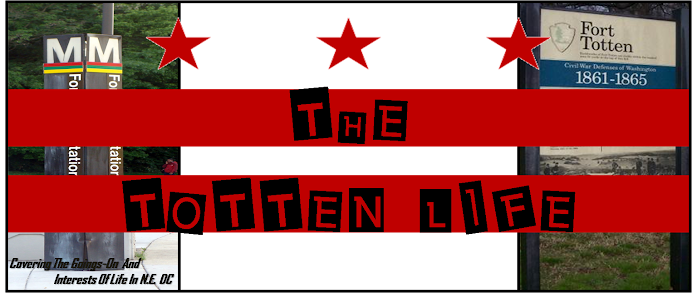Living in a major metropolitan area affords little interaction with wild animals...not including the all too common rodent scurrying out from trash cans. The District, however, is dealing with an animal problem that seems to be popping up in other cities (including Detroit and New York City)...White Tail Deer! While many residents of Chevy Chase and neighborhoods near Rock Creek Park are used to seeing deer on a regular basis, the sighting's outside the heavily wooded sections of DC were nearly non-existent. The past two summers, however, have shown a change in the typical range of the deer population in the City. In August of 2009,
several local news outlets reported on the recent explosion of the once negligible White Tail Deer population in Rock Creek Park. The "Summer of the Deer" was capped off by deer encounters in a Silver Spring grocery store, as well as the now infamous doe that leaped into the lion's den ar the National Zoo. However, it seemed as though much of N.E. DC was spared run-ins with the antlered terrors. This is true no longer.
 |
| Deer at Ft. Totten Metro 7/20/10 |
Starting as early as late April of 2010, deer began to make, what were thought to be extremely rare, appearances in and around the Ft. Totten Metro, Ft. Bunker Hill, and Queens Chapel. As spring ran into summer, it seemed as if the sightings became an almost weekly event in much of the ANC 5A area. Looking at aerial maps of the city shows how the lightly wooded strip park that runs from CUA right up through Queens Chapel and into Maryland lacks any connection to Rock Creek Park. The same goes for an aerial view of Ft. Bunker Hill, which is almost an island of green alone in the suburban neighborhood of Brookland. This means that deer are traversing through extremely urban neighborhoods in order to make it to their new homes in NE. As common sense would dictate...this is not a very safe combination for any party involved.
Many residents enjoy walking through the park areas and encountering an animal often associated with the country. However, the issues associated with a growing population of deer in a heavily urban area were quickly realized. In late May, a deer was struck and killed on South Dakota Ave. causing a twocar accident that shut down the street for two hours. Several homes in the area also report disappearing flowers (impatiens seem to be candy for the invading hordes) as they look to find new foraging grounds. As the deer become more acclimated to interacting with humans, they also have a tendency to become non-responsive or even aggressive towards them.
 |
| Aerial Map of ANC 5A |
Any time you see the increase of an animal population, there is the inevitable outcome of an increased presence of their predators. "What would possibly prey on deer in the city ?" you may ask yourself. The answer is simple...
Coyotes!! Many people don't associate Coyotes with the east coast, but area biologists now place the Coyote population in the DMV area over 1200. Often a quiet night in Rock Creek Park is pierced by the howl of the wild canine. As the deer population in the city increases, so will the potential for Coyote predation...and not just on deer (evidence of which can often be seen in Rock Creek). Northern Virginia has seen an increase of coyote attacks on house pets as well as humans in past years, and it is no coincidence that this appears to be proportional with the increased deer population.
The National Parks Service, which administers much of the green space in the city, is in a tough spot. Culling the population seems to be necessary but very unpopular. The question remains at how do you decrease a wild animal population in an major metropolitan area? Suggestions have been numerous, and ranged from sharpshooters in RCP to catch and relocation programs. Perhaps DC can take a note from the
play book of Helena, MT (yes, we did suggest for the nations capital to follow suit with Montana) or even the booming mecca of
Oshkosh, WI! No matter what the ultimate solution is, the city needs to act soon before the negative impacts of deer interactions with humans become too great.






No comments:
Post a Comment